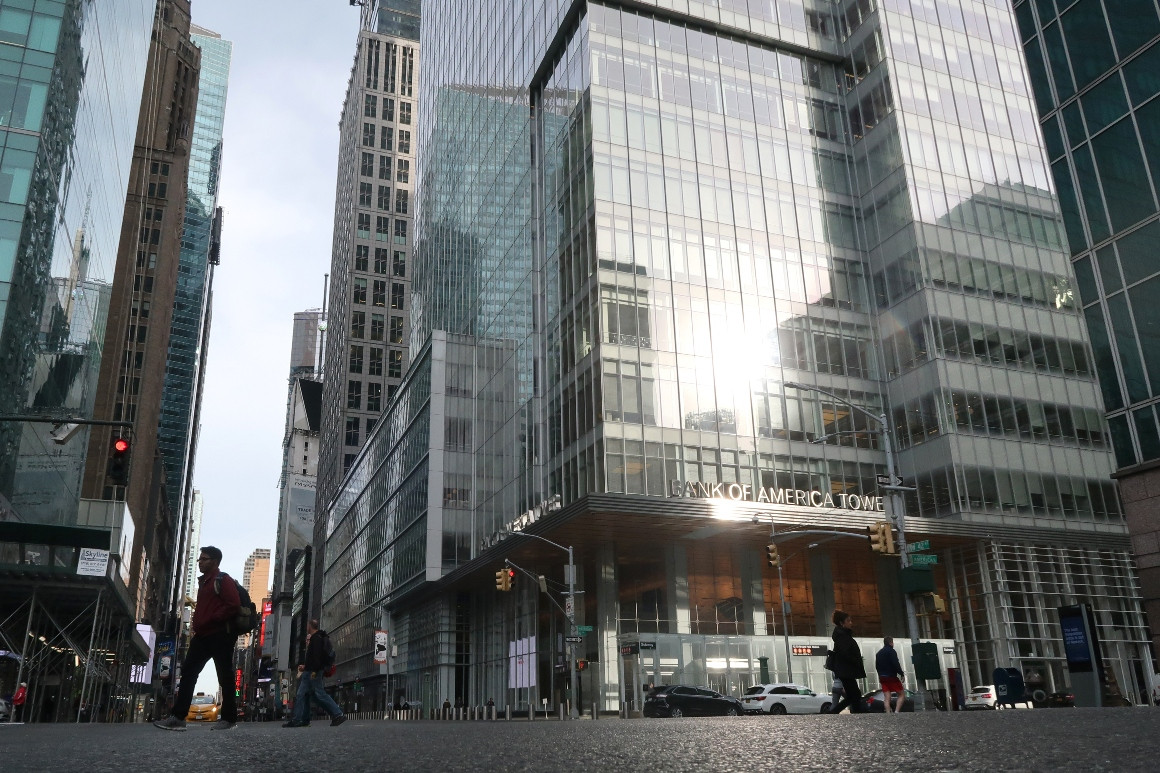US Office Vacancy Rates Reach An All-Time High Amid Changing Work Trends
US Office vacancy rates reach an all-time high, as Moody's Analytics reports a record-breaking 19.6% in the fourth quarter of 2023, surpassing previous records and reflecting a significant shift in the office real estate sector amid evolving work trends.
Author:Emmanuella SheaReviewer:Dexter CookeJan 10, 20245.4K Shares72.7K Views

The United States is witnessing a significant shift as USoffice vacancy rates reach an all-time high. In the office real estate sector, the national office vacancy rate hit an unprecedented high of 19.6%, as reported by Moody's Analytics. This new peak surpasses the previous record of 19.3%, a figure that has been reached twice in the past, in 1986 and again in 1991 during the savings and loans crisis.
This surge marks the steepest quarterly rise since the first quarter of 2021, standing 280 basis points higher than pre-pandemic levels.
Surging Vacancies And Shifting Work Patterns Reshape US Office Market
"Despite the increasingly optimistic consensus on the likelihood of a macroeconomic soft landing along with positive news from the labor market, the permanence of dynamic hybrid models has effectively muted office demand, making the year 2023 the most downbeat since the Great Financial Crisis," noted strategists from Moody's in a recent publication.
The report highlights a unique challenge in the US office market, now considered to be in "uncharted territory."
The increase in office vacancies is not an isolated phenomenon. It coincides with broader economic trends, particularly the persistence of work-from-home arrangements that emerged during the COVID-19 pandemic.
As more companies adopt flexible work policies, the traditional office model is undergoing a radical transformation. This shift is further compounded by concerns over commercial real estate debt, with estimates of around $1.5 trillion in loans due to mature in the coming years.
"Though new supply is slowing, contracting demand continues to be the main driver of rising vacancy, which we think will continue for another couple of years," Capital Economics stated, projecting a potential 43% peak-to-trough decline in US office values.
These findings underscore the profound impact of the pandemic on work culture and the commercial real estate market.
Despite the bleak outlook for office spaces, the market is not without its bright spots. Class A buildings, characterized by modern amenities and prime locations, continue to attract tenants.
These spaces, offering flexible configurations, are especially appealing for businesses seeking to maintain a physical office for branding and collaborative purposes. Additionally, suburban office spaces are performing better than their urban counterparts, benefiting from their proximity to residential areas and potentially shorter commutes for employees.
However, the challenges facing the office real estate market are substantial. The average pre-pandemic office vacancy rate was around 16.8%, indicating a marked increase in unoccupied space.
This trend poses significant challenges for landlords and developers, who are struggling to fill their buildings. It also has cascading effects on surrounding businesses, such as restaurants and retailers, which have traditionally relied on the patronage of office workers.
While new construction has cooled to its lowest levels since 2012, the impact of the surplus office space—a legacy of the overbuilding in the 1980s and 1990s—is now being felt more acutely in the wake of changing work habits.
The report from Moody's Analytics suggests that the US office market may not see a return to pre-pandemic vacancy rates for years, if at all.
Conclusion
In conclusion, the US office market is at a crossroads, with high vacancy rates and changing work patterns signaling a significant shift in the sector. While some areas of the market show resilience, the overall landscape reflects a profound transformation influenced by pandemic-induced work habits and economic trends. As the market navigates through these changes, stakeholders, from developers to small businesses, will need to adapt to the evolving realities of the post-pandemic world.

Emmanuella Shea
Author
Emmanuella Shea is a distinguished finance and economics expert with over a decade of experience. She holds a Master's degree in Finance and Economics from Harvard University, specializing in financial analysis, investment management, and economic forecasting.
Her authoritative insights and trustworthy advice have made her a highly sought-after advisor in the business world.
Outside of her professional life, she enjoys exploring diverse cuisines, reading non-fiction literature, and embarking on invigorating hikes.
Her passion for insightful analysis and reliable guidance is matched by her dedication to continuous learning and personal growth.

Dexter Cooke
Reviewer
Dexter Cooke is an economist, marketing strategist, and orthopedic surgeon with over 20 years of experience crafting compelling narratives that resonate worldwide.
He holds a Journalism degree from Columbia University, an Economics background from Yale University, and a medical degree with a postdoctoral fellowship in orthopedic medicine from the Medical University of South Carolina.
Dexter’s insights into media, economics, and marketing shine through his prolific contributions to respected publications and advisory roles for influential organizations.
As an orthopedic surgeon specializing in minimally invasive knee replacement surgery and laparoscopic procedures, Dexter prioritizes patient care above all.
Outside his professional pursuits, Dexter enjoys collecting vintage watches, studying ancient civilizations, learning about astronomy, and participating in charity runs.
Latest Articles
Popular Articles